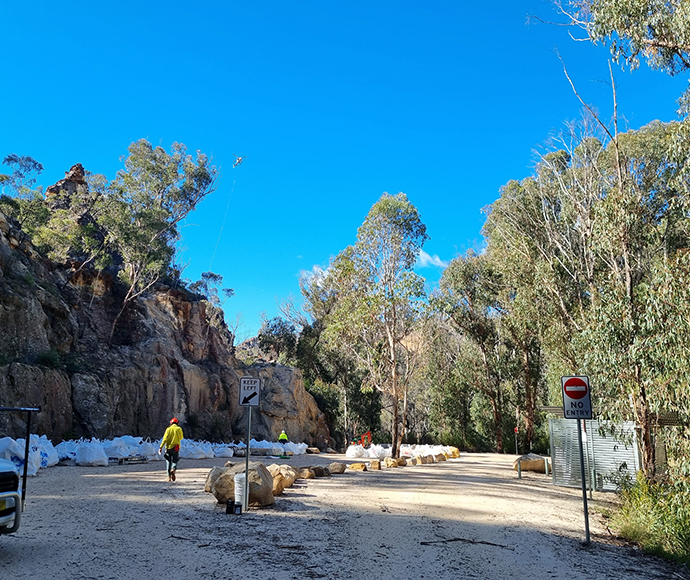The NSW National Parks and Wildlife Service (NPWS) is continuing to improve access to the popular Glow Worm Tunnel precinct in Wollemi National Park.

Work to repair and upgrade the 1.4 km Glow Worm Tunnel Walking Track is underway, with helicopters flying in 175 loads of materials including sandstone logs, some up to 800 kg in weight, for the $4.3 million project.
The essential work includes improvements to the surface and drainage of the track, plus the installation of additional steps and new seating.
NPWS Blue Mountains Branch Director David Crust said the track upgrade follows the completion of the first stage of the project with new toilet facilities and increased parking capacity at the site.
"Following damaging floods in 2021 and 2022, the surface of the track was left uneven and eroded," Mr Crust said.
"This work to repair and improve the track will incorporate stone and timber steps and improved drainage to protect it from future damage and erosion.
"New informative signage about the glow worms and the history of the Wolgan Valley Railway is also planned, to help visitors learn more about this beautiful site."
Up to 50,000 visitors a year are drawn to the Newnes Plateau site each year to view the glow worms living inside the historic railway tunnel.
The car park, track and tunnel will remain closed until the work is completed.
Mr Crust said NPWS hope to have the attraction ready to welcome back visitors by the winter school holidays.
The project is funded by the Australian and NSW Government's Bushfire Local Economic Recovery Fund.
Visitors are reminded to check the alerts notifications on the NPWS website before visiting for the latest information on closures.






